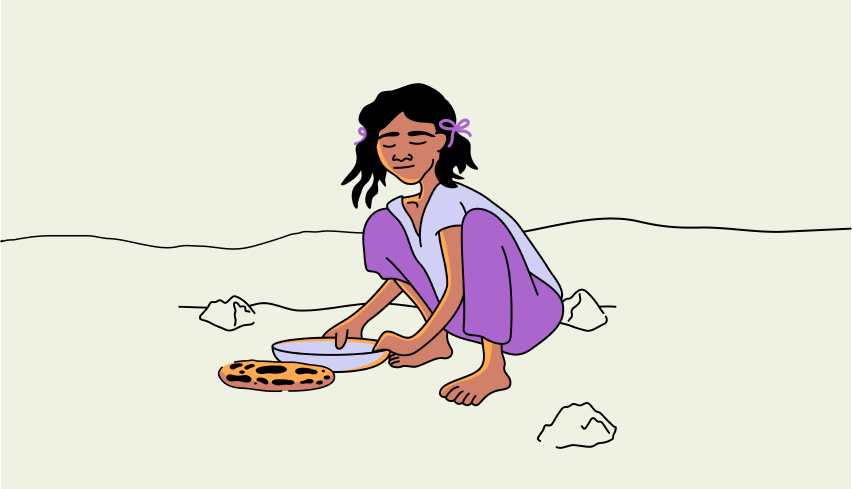Written by: SOS International
In part one of “The Factors of Food Insecurity,” we looked at the global factors that impact food insecurity at the highest level. We discussed how food insecurity is affected by population growth, environment, weather, and political instability/ conflict. However, those global factors impact everyone differently, and they most negatively impact those who find themselves in poverty.
Poverty is the most significant factor that contributes to food insecurity. This is because poverty itself has many layers that can keep generations trapped in a cycle of poverty. Here, we will discuss the barriers to food acquisition, mainly due to being stuck in a cycle of poverty, but also include the challenges of chronic health issues, disabilities, and the presence of food deserts.
Poverty
Today, 8.5% of the global population, nearly 700 million people, live in extreme poverty, living on less than $2.15. In the US, the current poverty rate is at 11.1%. ¹ For obvious reasons, poverty is a considerable challenge. Individuals or families lack the resources to afford basic needs like food, water, clothing, and shelter. When it comes to food, living in poverty makes it hard to afford food, let alone healthy options. As a result, those struggling with poverty often have to choose cheaper, unhealthy foods that are high in calories but low in nutrients. This not only fails to meet their dietary needs but can also lead to chronic health problems like obesity, diabetes, and other illnesses.
Families with tight budgets often have to make tough choices about their expenses. They have to juggle paying essential costs like housing, utilities, healthcare, and transportation, which can lead to difficult decisions about food. Many families may skip meals, eat smaller portions, or turn to food assistance programs just to get by. These sacrifices can have a long-term effect on both parents’ and children’s physical and mental well-being.
Additionally, those born into impoverished circumstances frequently lack access to quality education, which can severely hinder their prospects for upward mobility. Education is a crucial determinant of future job opportunities and earning potential. When access to quality schooling is limited, these individuals often find themselves trapped in low-wage, unstable employment, perpetuating the cycle of poverty. It’s also hard to focus and pay attention in school when you’re hungry, making learning and completing assignments even more challenging.
If these factors weren’t enough, health issues resulting from poor eating habits and limited access to health care create additional barriers for many, further complicating their efforts to achieve food security.
Poverty presents a significant challenge, and breaking free from its cycle can be difficult. Food insecurity often arises as a result of poverty, leading to health issues that further complicate one’s ability to escape this cycle. Chronic illnesses can develop from long-term poor eating habits that families have resorted to due to limited options.
The Challenge of Chronic Health Issues and Disabilities
Individuals with chronic health conditions and disabilities often encounter significant barriers when it comes to accessing nutritious food.
Chronic diseases—such as heart disease, diabetes, arthritis, and chronic obstructive pulmonary disease (COPD)—can limit the physical and emotional capacity of individuals, affecting their ability to work consistently. This reduction in work capacity can make it hard to achieve a stable income. Furthermore, the ongoing medical expenses associated with managing chronic conditions can strain budgets, diverting funds from purchasing adequate food.
On the other hand, individuals with disabilities may face unique challenges related to mobility and daily functioning. For those with physical disabilities, grocery shopping and meal preparation can be challenging. Limited mobility may require additional support, which is not always readily available.
Both groups may struggle with specific dietary restrictions linked to their health conditions, often resulting in higher grocery costs that push them further toward food insecurity. Additionally, social isolation, which is common among people with disabilities, can limit access to supportive networks that could offer assistance with food procurement. Mental health challenges, frequently associated with both chronic illnesses and disabilities, can lower one’s motivation to seek help or engage with navigating complex application processes for food assistance programs.
Those with chronic health issues and those with disabilities face unique challenges in obtaining food. This is true for those who are born with disabilities or those who develop illnesses or disabilities during their life. These challenges are amplified when entire communities of people are struggling to get food.
Putting it all together
In Part One of this blog, we explored the global factors that impact various regions around the world. Population growth, environmental issues, weather patterns, and political instability or conflict all significantly affect those who are most vulnerable: individuals living in poverty. Facing poverty is a challenge in itself, especially when health issues arise. Price increases due to population influxes, reduced access to food and produce because of extreme weather, and supply chain disruptions caused by war or policy changes all exacerbate the struggles of the impoverished.
Understanding that food insecurity does not always stem from personal choices is crucial. While global factors influence everyone, those with lower incomes or less stable access to food are more vulnerable to these impacts. Shifts in global dynamics can worsen food insecurity for low- and middle-income individuals. Consequently, those who fall into poverty or are born into it often find themselves trapped in a cycle with no relief from these challenges.
This is why a global focus must be on creating solutions for food accessibility. This entails political advocacy and tailored community initiatives.
Change is only possible when people like you recognize the problem and take action. Advocacy requires collective efforts to push for policy changes that benefit the impoverished. Community solutions can be implemented by compassionate individuals dedicated to serving their neighborhoods.
The fight against food insecurity is far from over. While global factors may be unavoidable, with a more attentive and proactive world, we can begin to reduce the levels of food insecurity.
1. Poverty Overview. World Bank. (2024, October 15). https://www.worldbank.org/en/topic/poverty/overview






